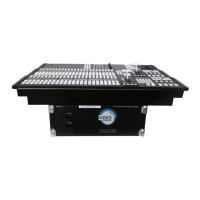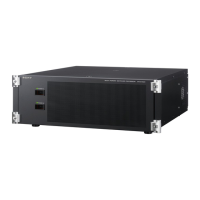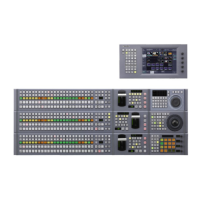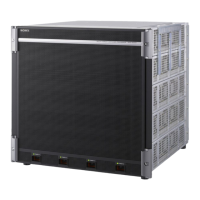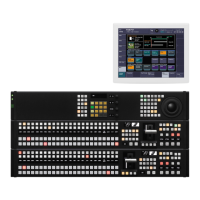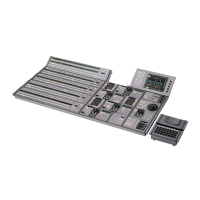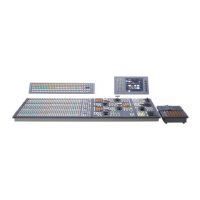Executing a Transition 71
Independent transition rate
Chapter
3
Signal
Selection
and
Transitions
3
Adjust the following parameter.
Executing a pattern limit transition
1
Press [PTN LIMIT], turning it on.
The button you pressed lights amber.
2
Execute the transition.
The transition progresses as far as the set pattern limit.
Even if the transition completes, the cross-point button
assignments of the background A and B buses do not
interchange.
3
Carry out the transition once again.
The status before the previous transition is restored.
this case, execution continues for the time specified by
the dedicated transition rate in the menu setting, as far
as the state of the next transition.
For details about settings,
1
“Selecting the Bank to
Make the Settings” (p. 357).
To set the transition rate when the pattern limit is
released
1
In the <Pattern Limit Release> group of the Edge/
Direction menu (1164), select one of the following.
Auto Trans Rate: Use the transition rate set in the
transition control block
Independ Trans Rate: Independent transition rate
2
If you selected [Independ Trans Rate] in step 1, adjust
the following parameter.
To cancel the pattern limit
To cancel the pattern limit after completion of step 3 in the
previous procedure, press the [PTN LIMIT] button,
turning it off.
If after carrying out step 2 in the previous procedure, the
pattern limit has been reached, carry out the following
procedure.
1
Press the [PTN LIMIT] button.
The button you pressed lights green.
2
Execute the transition.
The [PTN LIMIT] button turns off, and the pattern
limit state is released.
Depending on the way in which the transition was
executed, the action will be as follows.
•
When you press the [CUT] button, the pattern limit
is immediately released, and the image switches
instantaneously.
•
When you press the [AUTO TRANS] button, until
the state of the next transition, the transition is
carried out over the duration given by the transition
rate.
•
When you move the fader lever, the transition is
carried out from the pattern limit state to the state
before the pattern limit transition was carried out.
Moving the fader lever even a little synchronizes the
fader lever position with the transition state, and you
can move the fader lever either in the forward
direction or in the reverse direction.
Depending on the settings in the Setup menu, the
transition may be executed at the instant you press the
[PTN LIMIT] button, and the button will turn off. In
Executing an Auto Transition
The following two modes can be used.
Cut
A cut switches instantaneously from the current video to
the new video. When the next transition is a key transition,
the key cuts in or out instantaneously.
Auto transition
The transition from the current video to the new video is
carried out automatically at a constant rate, using the
transition effect selected as the transition type.
You can set the transition rate in advance
(
1
p. 68).

